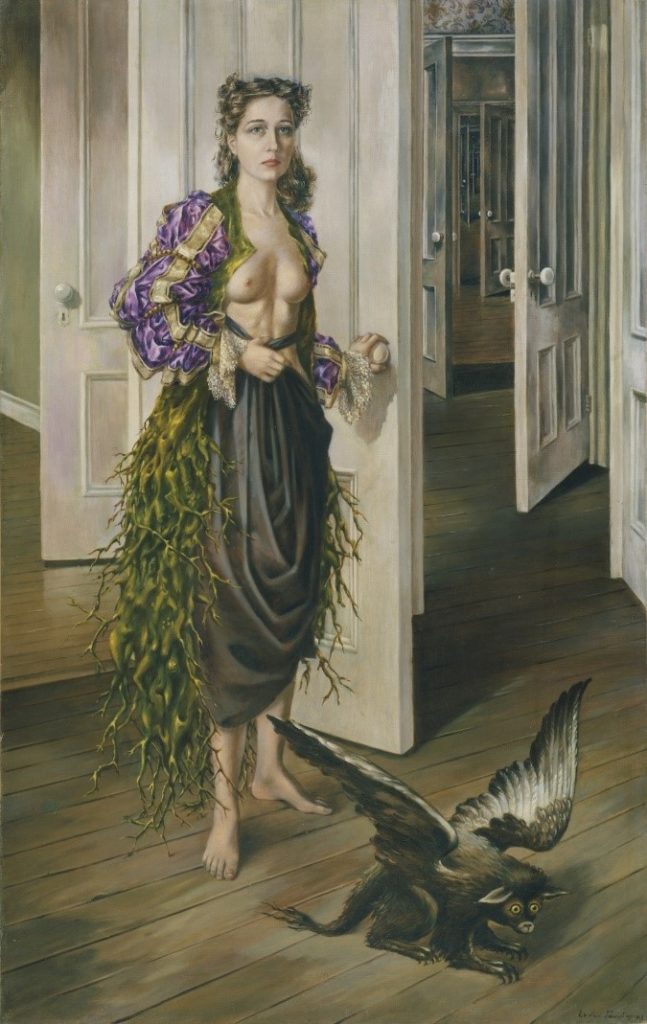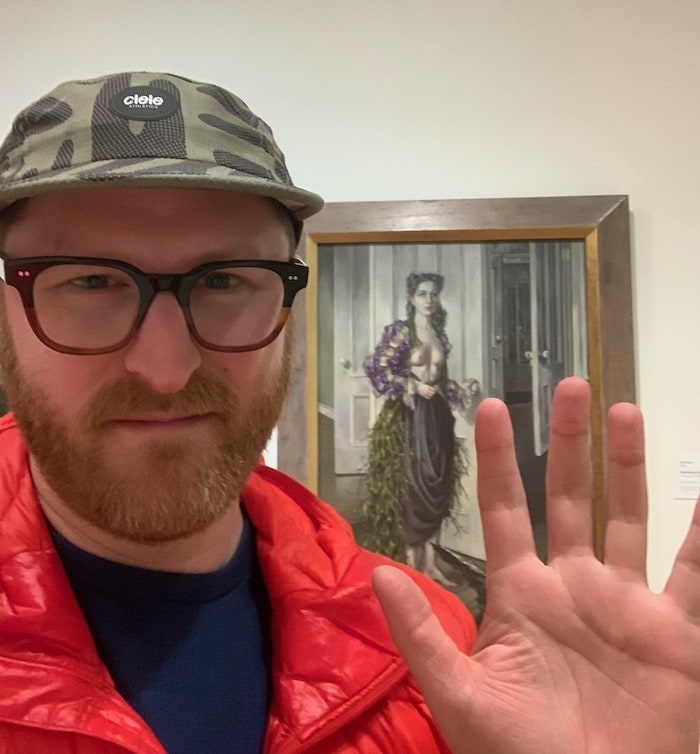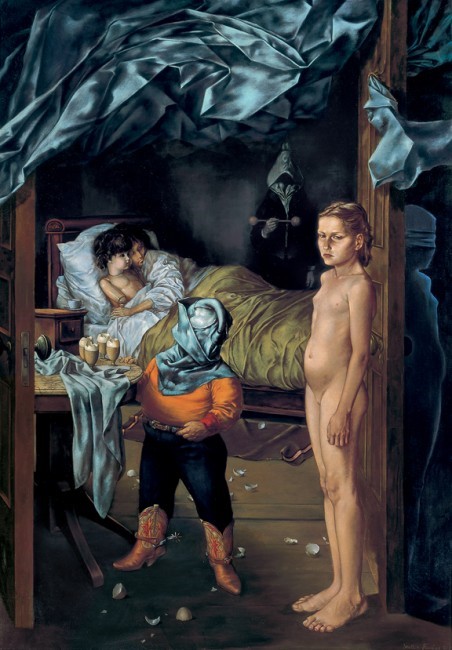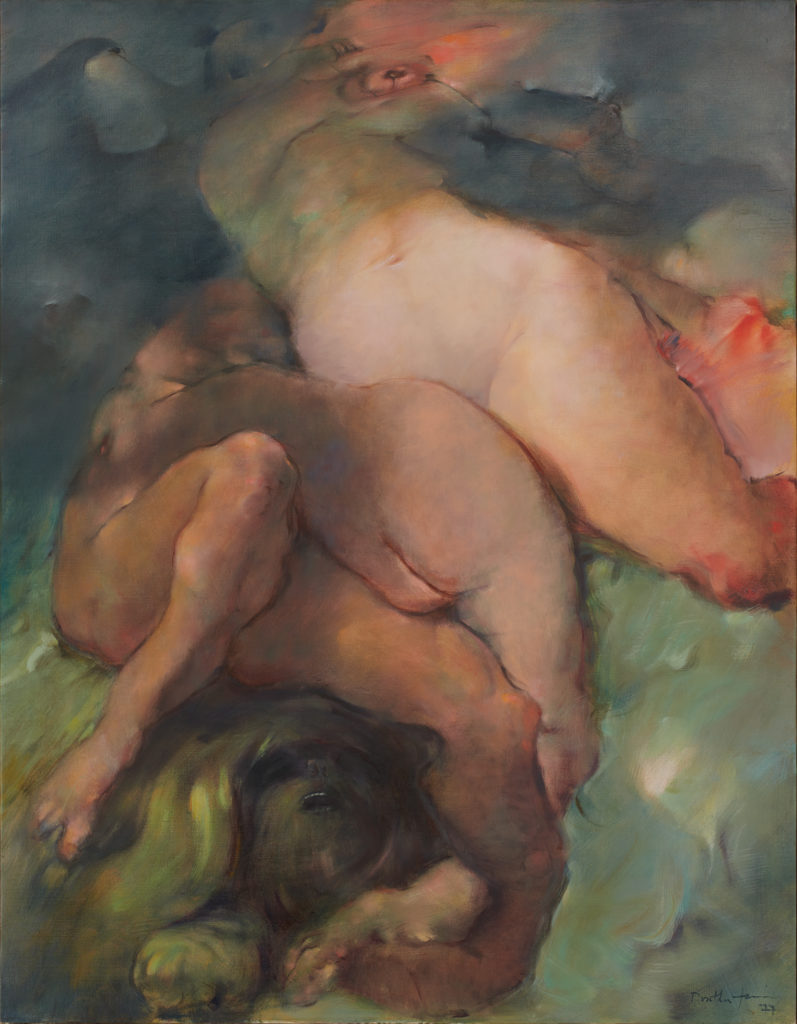Birthday

Dorothea Tanning, Birthday, 1942. Oil on canvas, 102.2 x 64.8 cm. Philadelphia Museum of Art, Philadelphia.
Tanning was born in 1910 in Galesburg, Illinois, a town in which she declared “nothing ever happened but the wallpaper.” Yet she spent a lifetime imagining what might be happening just under the surfaces of those neatly furnished sitting-rooms.
A self-taught creator, she sustained herself as a successful commercial artist while pursuing her own painting. She was in New York as the surrealists began to arrive, exiled or rescued from a ravaged Europe, and she forged deep friendships with the likes of John Cage, Marcel Duchamp, Joseph Cornell and Lee Miller.
While steeped in this artistic milieu and heavily influenced by surrealism, Tanning painted some of her best-known works. In Birthday (1942), the artist depicts herself in the process of metamorphosis, a “rebirth” from one state to another.
She is strangely composed of hybrid parts, a fusion between reality and fantasy, mundane and magical, urban and rustic. The overall impression of the figure is of a chrysalis emerging from a cocoon. A fusion of both nature and culture, this dazzling young woman stands on the threshold of an unknown, yet exciting, adventure. The technical skill demonstrated in Birthday—its clarity and precision, typical of the surrealist style—intensifies the effect of the interwoven strands of fantasy and reality.
In 1999, the Philadelphia Museum of Art acquired Birthday. In the brochure for the survey show, entitled “Birthday and Beyond,” Tanning noted of the painting:
It was a modest canvas by present-day standards. But it filled my New York studio, the apartment’s back room, as if it had always been there. For one thing, it was the room; I had been struck, one day, by a fascinating array of doors—hall, kitchen, bathroom, studio—crowded together, soliciting my attention with their antic planes, light, shadows, imminent openings and shuttings. From there it was an easy leap to a dream of countless doors. Moreover, alone and taking stock of myself, I felt a sort of immanence as if my life was revealing itself at last—a real birthday.
The “immanence” of “a real birthday,” rather than a calendar one, is a sentiment that captures the multi-layered significance of the “rebirth” Tanning experienced in 1942. This was also the year Max Ernst came to her apartment on Julien Levy’s recommendation to see if she had anything suitable for a show his then wife, Peggy Guggenheim, was planning. Tanning herself has outlined the details of their meeting in both of her memoirs, but Ernst was so impressed by the painting, and presumably by Tanning herself, that he suggested a game of chess after spotting the board and pieces set up in the apartment.
The story which follows is that he never really left. While this may be a slightly poetic gloss over the practicalities of the period, it is also indicative of the intensity between these two artists, and gives us an insight into the type of “bohemian” lifestyle they would pursue. Near the end of her life, in 1999, Tanning explained that she had never liked celebrating her actual birthday and that she viewed the meeting with Ernst as her symbolic “birthday.” Accordingly, she had always celebrated it on November 24th (their meeting day) as opposed to the date on her birth register (August 25th).
Sidenote: I was in Philadelphia a few months ago and saw a familiar face. I'd probably seen this painting online a hundred times in the previous months, and was still shocked at how much more I noticed IRL. Nothing beats looking at artworks in person!


